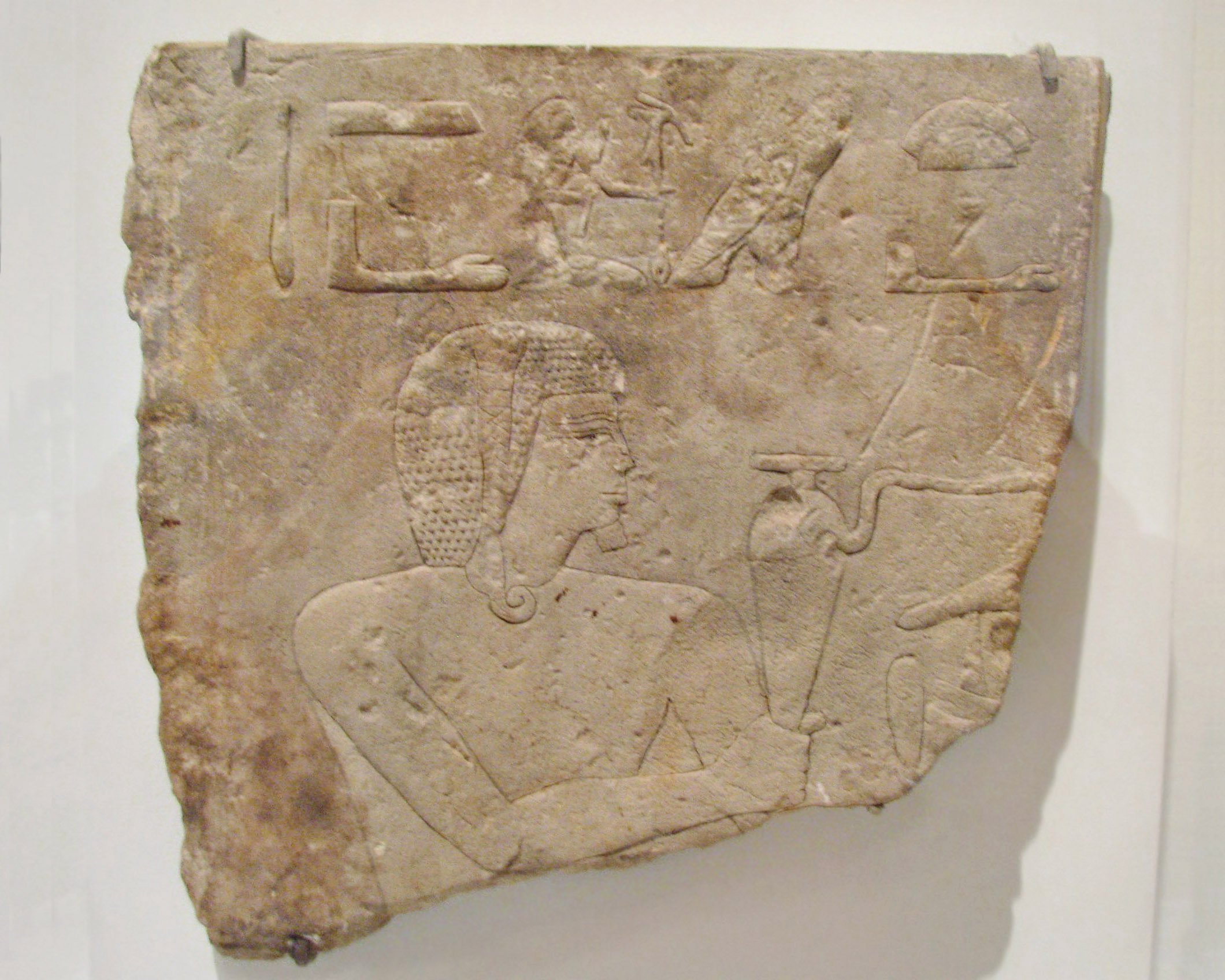
Relief of Prince Khaemwaset
Limestone, 12 13/16 x 12 9/16 x 2 in. (32.6 x 31.9 x 5.1 cm)
New Kingdom-Ramesside Period, ca. 1279-1213 B.C.E.
From Saqqara
Brooklyn #37.513, Charles Edwin Wilbour Fund
Photo © Joan Lansberry, May 2008
|
"Among the king's many sons who held high positions, the second son of Queen Isetnefret, Khaemwaset, must be singled out. He was high priest of Ptah in Memphis and acquired a reputation as a scholar and a magician that would survive until Roman times. No other son of Ramses II left so many monuments and many of these were inscribed with learned, sometimes archaic, texts."(_The Oxford History of Ancient Egypt_, edited by Ian Shaw, page 302)
(From the info cards): "He is depicted bearing a libation vessel and sporting the sidelock of a sem-priest, a functionary of Ptah"
By lucky chance, I found John Ray's _Reflections of Osiris: Lives from Ancient Egypt_ at our local library. It features a chapter on "The First Egyptologist", Ramses II's fourth son Khaemwaset, (aka Khaemwise, Setem Khaemwaset or Setne Khaumuast). Ray writes in an engaging style. A couple of passages he quotes certainly reveals the heart of those who study ancient things:
"Instead of a pyramid, the late Fourth-Dynasty king Shepseskaf built himself an unusual oblong tomb, of the type known as a mastaba. It was already 1,200 years old when Khaemewise inspected it, but this too came in for the treatment. The names of Shepseskaf were inscribed on its exterior wall, facing those of Ramessess, and below this was set the following:
Ray continues further:
"It was the High Priest and Prince Khaemwise who delighted in this statue of the king's son Kawab, which he discovered in the fill of a shaft (?) in the area of the well of his father Khufu. (He acted) so as to place it in the favour of the gods, among the glorious spirits of the chapel of the necropolis, because he loved the noble ones who dwelt in antiquity before him, and the excellence of everything they made, in very truth, a million times."(pages 87-88)
Likewise, as he remembered those who lived 1,000 years before him, so he was also remembered 1,000 years after his death.
Ray declares "Khaemwise has the most colourful afterlife" as "his administrative title, the Setem, was garbled into Setne. It is under this name that he appears in a number of tales written in demotic, a form of hieroglyphic shorthand, some 1,000 years after his death. The Setne of these tales is sometimes recognisable as the scholarly priest..." who then goes through wild adventures as "here we find Setne in characteristic style, reading hieroglyphs on temple walls, when he receives a tip-off that a book containing the secrets of the universe is hidden in an ancient tomb. Eventually he finds the tomb and enters it, where he is entertained by a friendly family of ghosts who tell him their life story. He rewards the ghosts' hospitality by making off with the book..." (page 95) Of course the ghosts don't let him get away with this, and eventually their book is returned. But certainly, he took the book's secrets away in his head.
No doubt the tales persist for Khaemwaset's curiousity was legendary. This, along with his careful attention to the antiquities, assure the ka of Khaemwaset will not be forgotten.
|


